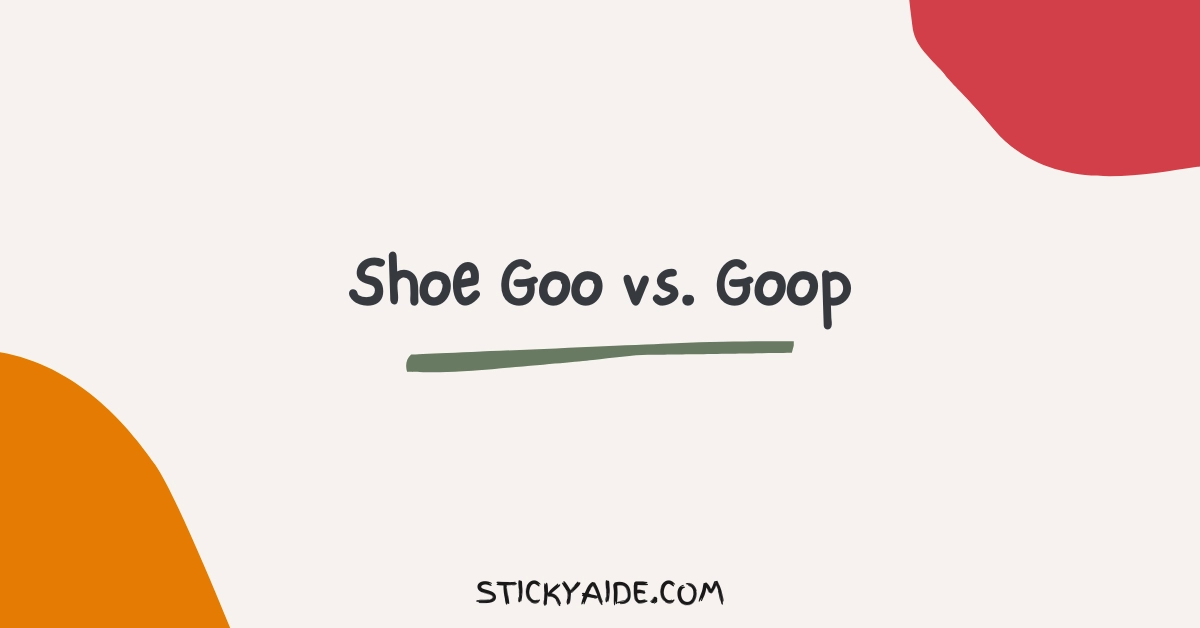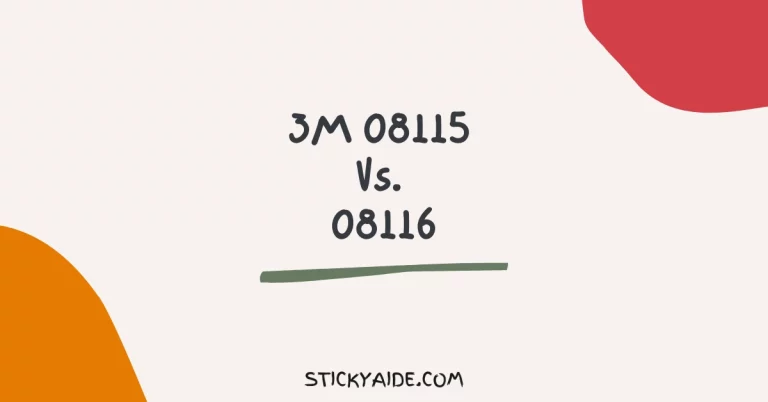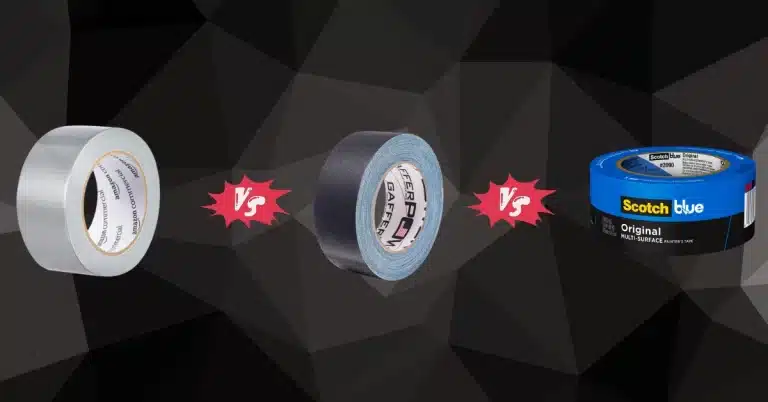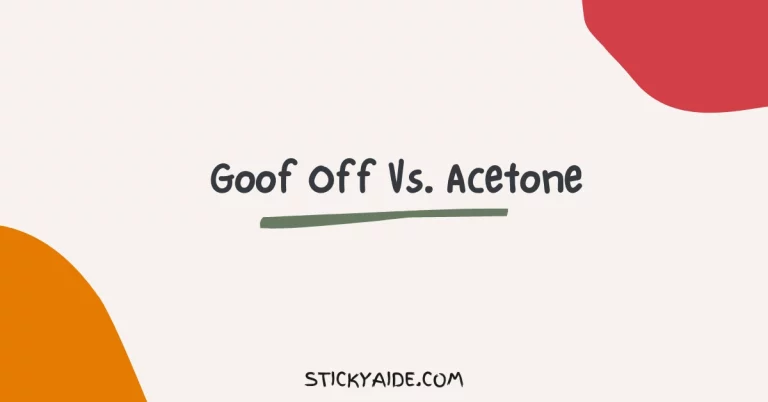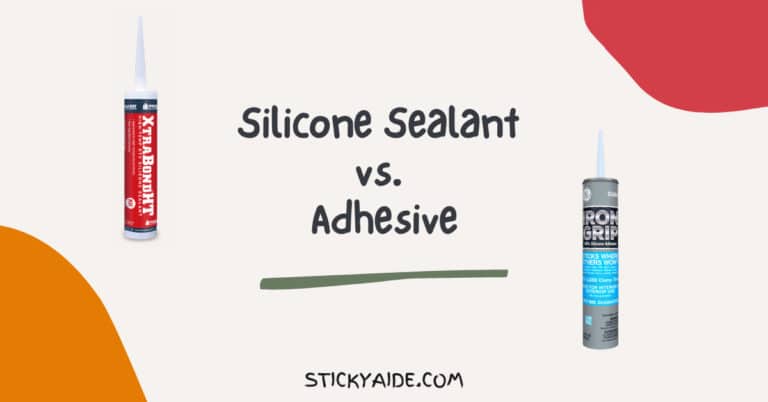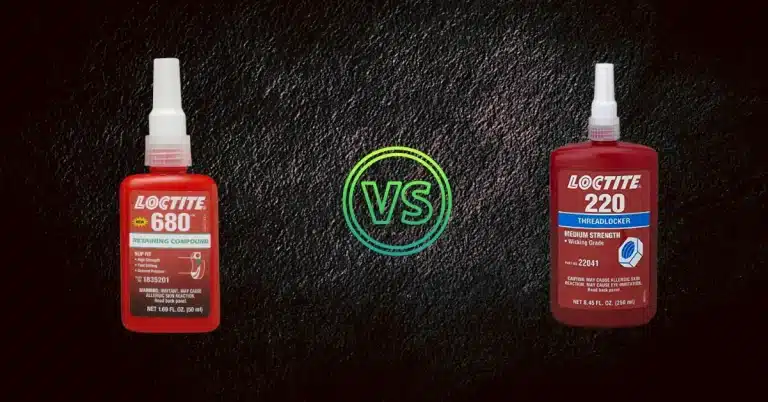When looking for ways to repair your old shoes, a suitable glue that fits your purpose and goes well with the material of the shoe and component you need is essential. Shoe Goo and Goop are two of the best adhesives you can use for shoe repair.
While both Shoe Goo and Goop are adhesives that work well with various materials, they have some differences, so when choosing between Shoe Goo vs. Goop, which one should you choose?
Read More: Goop Glue Vs. E6000
Read More: Does Shoe Goo Work?
Shoe Goo vs. Goop
What is Shoe Goo?
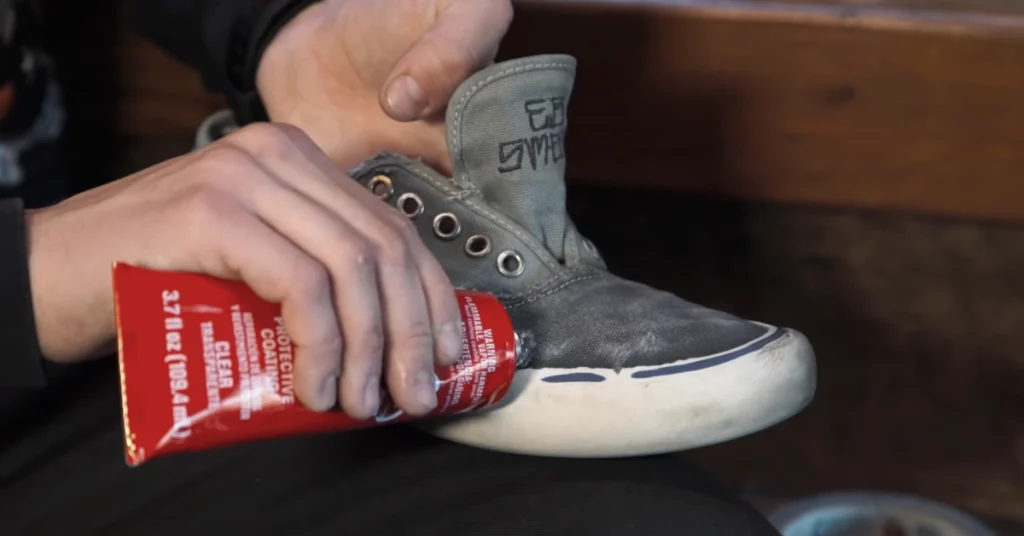
Shoe Goo is an adhesive made for repairing and fixing shoes by Eclectic Products and is one of the household names for glues for improving shoes. Shoe Goo is one of the standard glues used to repair and fix old, worn-out shoes or to protect shoes from damage early on.
Shoe Goo is a particular type of rubber cement that creates a permanent bond between surfaces once wholly cured. Furthermore, the composition of Shoe Goo makes it an ideal sealant that you can use to fill small holes or gaps in your shoes.
Shoe Goo is meant to be used with shoes, so it works well with most common materials used on Shoes, like – Leather, Vinyl, Canvas, or Rubber. Shoe Goo is waterproof once cured and abrasion resistant, making it ideal to use with shoes for various purposes.
You can use Shoe Goo to repair shoes you’ll be using for casual sports since the glue is flexible once cured. Shoe Goo comes in clear color and is available in tubes of 0.18 fl oz, one fl oz, and three fl oz.
Read More: Loctite Shoe Glue vs. Shoe Goo
Read More: How to Use Shoe Goo?
What is Goop?
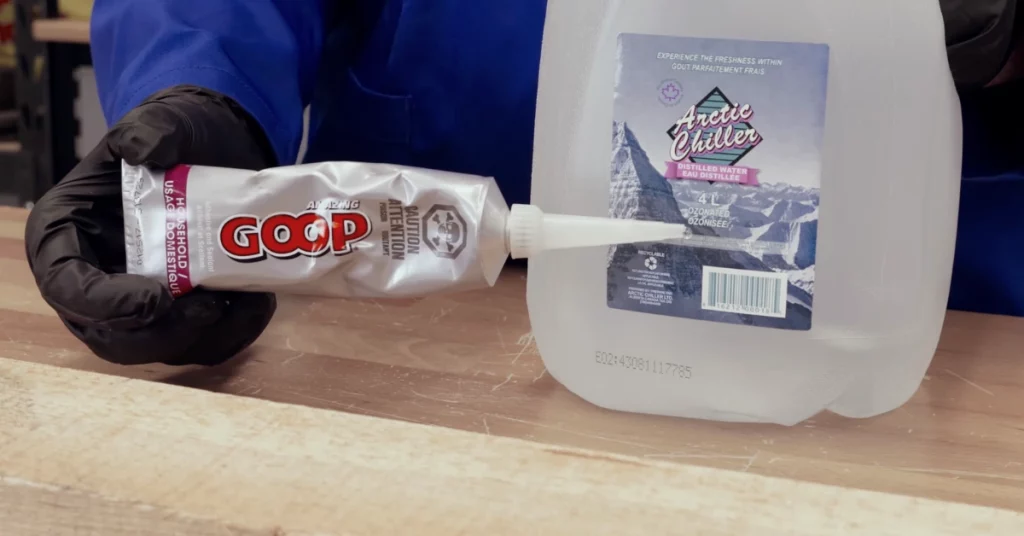
Amazing Goop is a Contact Adhesive that can also work as an excellent sealant by Eclectic Products. Goop is a silicone-based adhesive, and unlike regular glue, it’s flexible, meaning it would not dry hard and will stay flexible once hardened.
Amazing Goop works well with a range of materials like – Stone, Ceramic, Porcelain, Glass, Metal, etc. When it comes to shoes, it will work well with – Leather, Rubber, or Vinyl-Plastic. Since Goop is also an excellent sealant, you can seal small holes or gaps in your shoes.
Goop is entirely waterproof once the glue is cured, so you can use it with shoes you use in wet conditions or rain. Furthermore, Goop is also UV Resistant, meaning you can use the boots repaired with Goop outdoors without the risk of them getting degraded.
Goop also dries clear once you apply the glue so that you can customize your shoes with no worries with Goop. Goop is chemical and abrasion resistant, making it ideal for usage in particular conditions.
While working with Goop, you must maintain cautionary steps since they are flammable. Goop comes in clear color in tubes of – 1 oz or 3.7 oz.
Read More: E6000 vs. Shoe Goo
Differences Between Shoe Goo And Goop
Now that you know what each of these glues offers, I’ll go over the differences between them.
Best Materials to Use on
Goop is an all-purpose adhesive, so it works well with various materials like – glass, plastic, metal, brass, wood, porcelain, ceramic and more. It will go well with Leather, Rubber, or Vinyl-Plastic shoes.
Shoe Goo also works well with materials like – Leather, Vinyl, Canvas, or Rubber.
Dry Time
Goop and Shoe Goo have similar bonding and dry time. These glues will start to bond within minutes after you apply the glue, and a complete cure will take 24 to 48 hours.
Goop will start to set within 45 minutes, while a complete cure will take 24 to 48 hours.
Shoe Goo will start to set within 70 minutes, and the complete cure will take 24 to 48 hours.
Glue Strength
Both types of glue offer similar bonding capabilities. However, Goop is slightly stronger once fully cured since it has a higher tensile strength of 3800 lb/in2 as opposed to 3500 lb/in2 of Shoe Goo.
Last Opinion
Goop and Shoe Goo offer similar features, and you can’t go wrong with either of them, so which one should you go for in Shoe goo vs. Goop? Both of these have similar bond strength and dry time. However, Shoe Goo has more rubber particles, which makes it more flexible than Goop. However, Goop is also flexible once cured, so Goop can also be a good choice.

